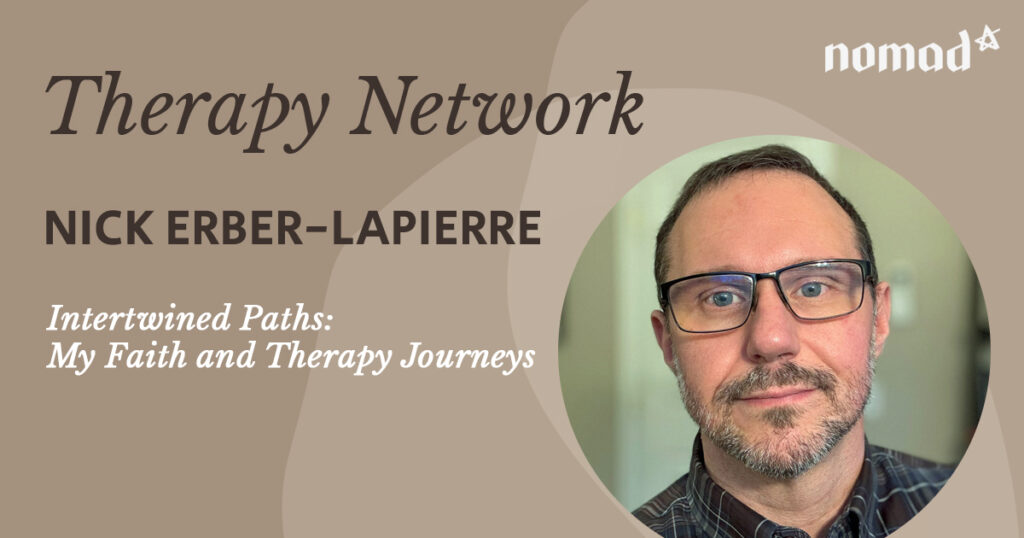My faith and therapy journeys are intertwined like leaves creeping up a lattice. I began my journey in a conservative Missouri Synod Lutheran church in the American Midwest—a tradition rooted in northern European immigration, hardworking people, and a culture that emphasized stoicism, community, and moral clarity. We were taught that faith was about duty: be a good person, do the right thing, follow the teachings. Church was mostly reserved for high holy days, and we didn’t talk much about deeper philosophy beyond those walls.

That started to change when I was in high school. My mom took me to see a therapist because I told her I was confused about my sexuality. In truth, I wasn’t confused—I knew I was gay—but I hadn’t yet found a way to say it out loud. Therapy wasn’t something we openly talked about in my community. It felt like stepping into a whole new world where internal experience mattered. The therapist asked me questions I didn’t know how to answer. It was the first time someone treated my interior life like it was real, important, and worth exploring.
That experience cracked something open in me.
Therapy gave me permission to name what I was feeling, to listen to the quiet, aching parts of myself that didn’t fit into the binary of right or wrong, saved or sinful. It taught me to sit with tension instead of avoiding it—to hold complexity and still feel grounded. It wasn’t an abandonment of faith. It was an invitation to deepen it.
At first, my spiritual life and my therapeutic healing ran parallel, like two train tracks moving in the same direction but never touching. But over time, they began to merge. Therapy taught me how to grieve, how to question, and how to see myself as someone worthy of love—not in spite of my questions, but because of them. Faith, in turn, gave me language for grace, for redemption, and for the mystery of transformation.
I had to let go of certain versions of God to find one I could actually relate to—one who was bigger than doctrine, more tender than judgment, and spacious enough to hold all of me. I learned that spiritual maturity wasn’t about having the right answers but becoming more attuned to love. Therapy helped me reframe so much of the internalized shame I had carried from my early faith experiences. Instead of seeing brokenness as something to fix, I began to see it as a doorway to compassion—for myself and for others.
Today, as a therapist and a person of faith, I no longer see those two parts of me as contradictory. I see them as partners in the same work. Both invite us to pay attention, to turn inward, to wrestle with meaning, and to move toward wholeness. Faith asks us to believe in something beyond what we can see. Therapy asks us to believe that healing is possible—even when we don’t feel it yet. Together, they’ve taught me that truth doesn’t always arrive as certainty. Sometimes, it comes as a whisper, a tear, or a deep breath we didn’t know we needed.
For a long time, I thought being a person of faith meant being sure. Now, I think it means being open. And therapy? It’s helped me stay open long enough to discover grace in the most unexpected places.
